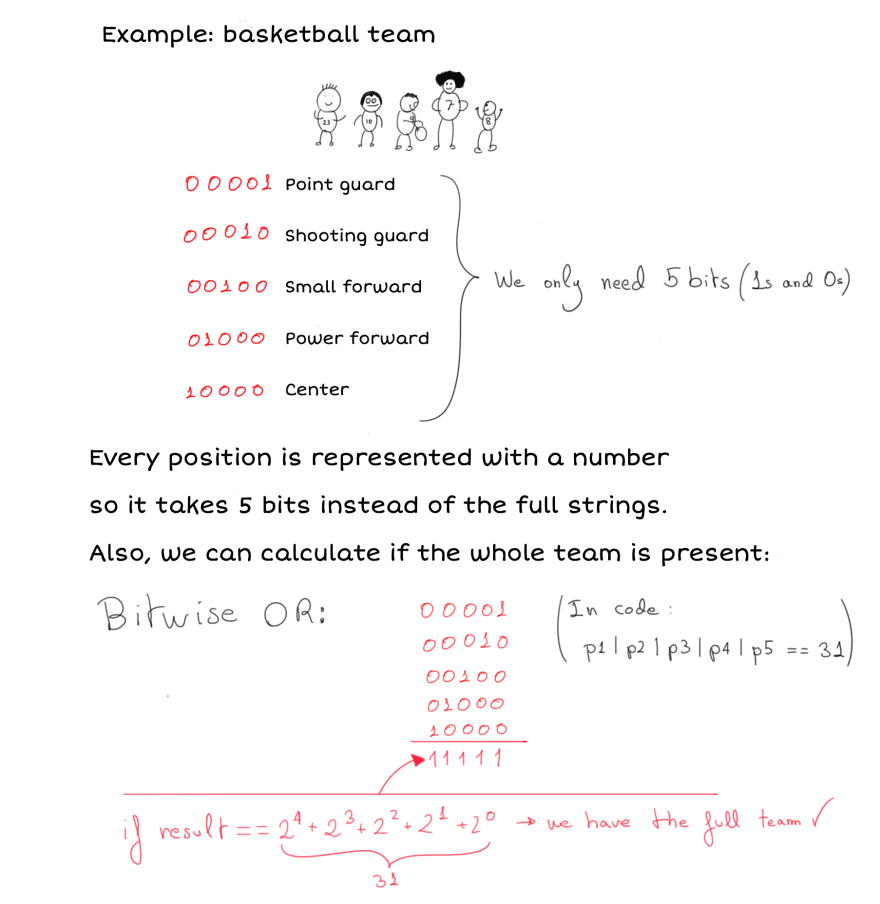Bitwise operations are really useful and fast for storing and operate on certain values. They are way more used in systems where resources are more limited like video-games or embedded devices.
In this first article about bitwise operations, we get a quick introduction to them with a drawing (new format!) and some written content but I plan on sharing more 🙂.
What are bitwise operations?
They're operations that deal with bits directly. Bits are 1s and 0s and it's how everything is stored internally in a computer so being able to operate with them directly is very efficient because the processor is able to do those operations natively. Wikipedia says:
...typically, bitwise operations are substantially faster than division, several times faster than multiplication, and sometimes significantly faster than addition...
The three basic operators
There are more but let's take a look today at the three most basic operators:
NOT
NOT is very simple, if there's a 1 we get 0. If there's a 0, we get 1.
It's represented by ~ in most programming languages so for example:
~0101011 = 1010100
AND
AND is like the boolean equivalent you already use in if conditions but with one difference, this operates at the level of bits:
1 & 1 = 1
1 & 0 = 0
0 & 1 = 0
0 & 0 = 0
OR
The same goes for the OR operation, represented with the | symbol in many programming languages.
1 | 1 = 1
1 | 0 = 1
0 | 1 = 1
0 | 0 = 0
How they operate with more than 1 bit
The key here is to remember that when we have a bitwise operation with more than 1 bit, we do it bit by bit. For example:
// Bitwise OR
111010
001100
-------
111110
Or in an AND operation:
// Bitwise AND
111010
001100
-------
001000
Real life example:
In a future article we'll see other operators because you can do some very efficient calculations with numbers but we need more than just these three. See you soon!







Top comments (0)